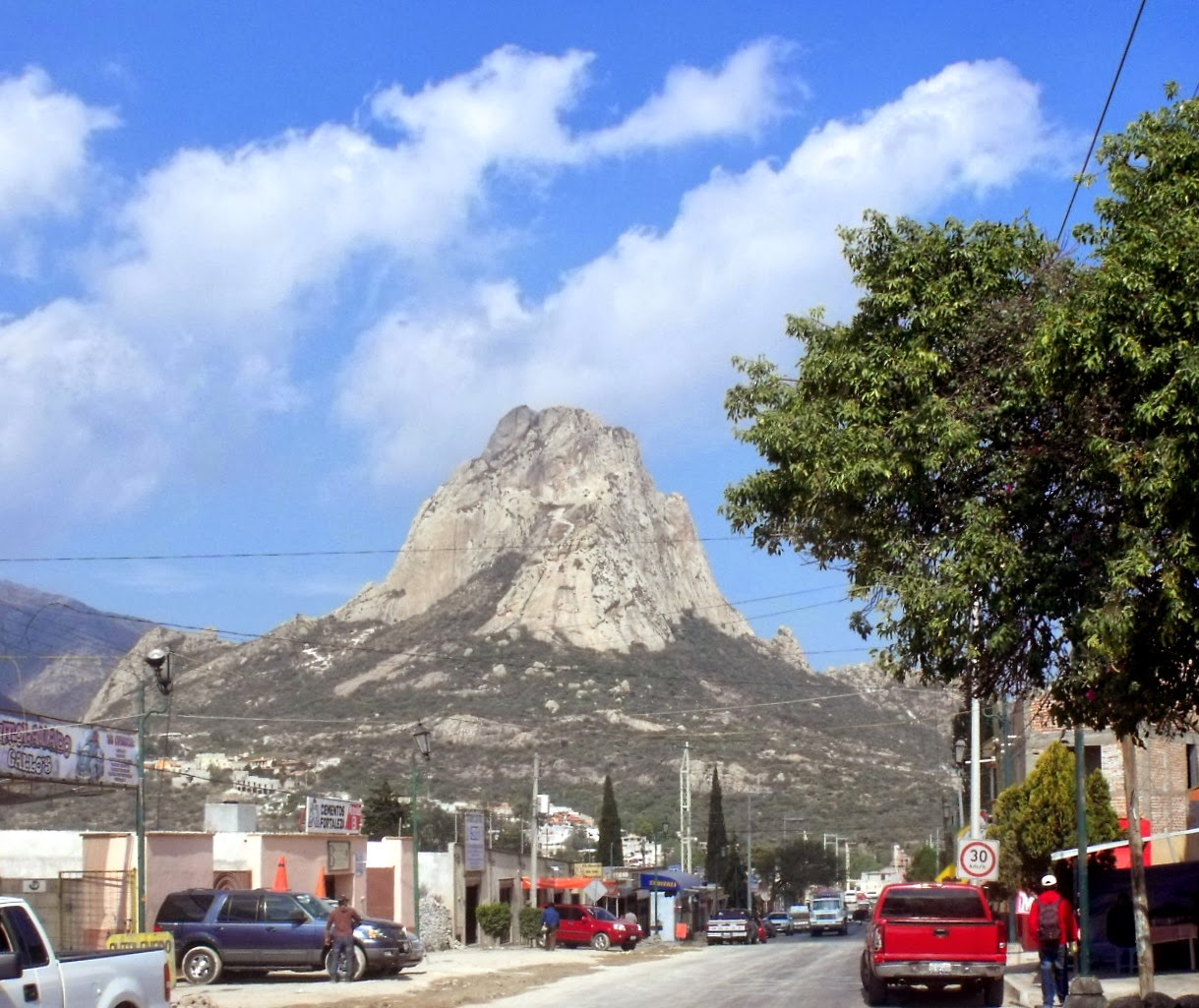Peña de Bernal (in English: Bernal's Boulder or Bernal Peak) At 433 m (1,421 ft) it is one of the tallest monoliths in the world. Other tall monoliths include the Rock of Gibraltar and Sugarloaf Mountain. (Mount Augustus, in Western Australia, is sometimes credited to be the world's second largest monolith.
Peña de Bernal is located in San Sebastián Bernal, a small town in the Mexican state of Querétaro.
According to Leonor López Domínguez of México Desconocido, the porphyrytic monolith was formed some 100 million years ago during the Jurassic period, when it must have been at least three times higher than today.
A recent chemical analysis by researchers at the National Autonomous University of Mexico has determined that it is much younger—likely formed about 8.7 million years ago.
Many people make a pilgrimage to the highest point hikeable, visiting a little chapel about halfway up.
Information Source : Wiki
The other interesting photos : Sanctuary of Atotonilco, San Miguel de Allende, Mexico
The other interesting photos : San Miguel de Allende, Mexico
Peña de Bernal is located in San Sebastián Bernal, a small town in the Mexican state of Querétaro.
According to Leonor López Domínguez of México Desconocido, the porphyrytic monolith was formed some 100 million years ago during the Jurassic period, when it must have been at least three times higher than today.
A recent chemical analysis by researchers at the National Autonomous University of Mexico has determined that it is much younger—likely formed about 8.7 million years ago.
Many people make a pilgrimage to the highest point hikeable, visiting a little chapel about halfway up.
Information Source : Wiki
The other interesting photos : Sanctuary of Atotonilco, San Miguel de Allende, Mexico
The other interesting photos : San Miguel de Allende, Mexico













